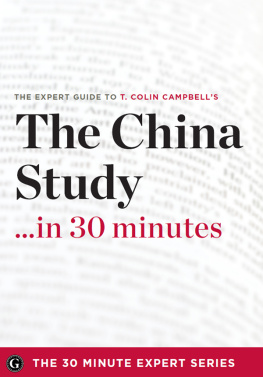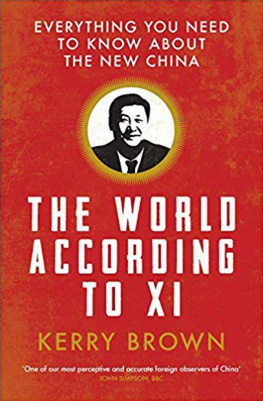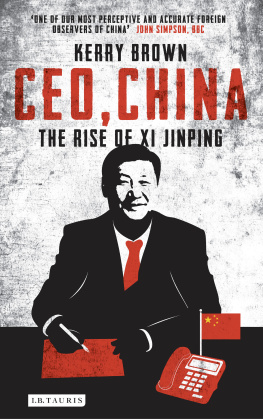China is a large and diverse land. Regional policies have been a central component of Chinas efforts to modernise its economy. It faces major challenges in ensuring that regional specialisation leads to prosperity not only on a national level but for all regions. As previous studies have shown, the Chinese government has sought to influence regional development through broad macro-level measures that have impacted on the economic and social environment. However, it has also exerted its influence over regional development through specific industry policies. This book focuses on the regional dimensions of these industry policies.
Measures taken in some of the more traditional industries such as steel and grains provide insights into the direction of regional industry policy. Yet these insights are clouded by the transition from highly regulated production and marketing arrangements of the pre-reform era. A clearer indication of the Chinese governments commitment and direction on regional industry policy may come from the myriad of industries that have developed only since the reform period began.
Beef is one of these industries. Developed in the post-reform era, growth in this industry has been remarkable even by Chinese standards and is now one of the largest beef industries in the world. The industry contains all the elements of interest to regional policy makers. Bovines are scattered throughout China. There have been major shifts in the location of bovine and beef production over the last two decades. The industry has been mooted and targeted as a means of raising incomes of poor households throughout both agricultural and pastoral regions. Industry characteristics mean that it is still highly localised, yet there is a currently small but rapidly growing premium sector of the industry that requires high levels of integration across parts of the marketing chain and across different regions. Critical and complex decisions about regional industry policy need to be made in the beef industry.
This book investigates the process of regionalisation in China through the window of the beef industry. It describes the spatial development of the industry in response to market and government forces. It examines the extent of integration across regions and highlights the forces that influence that integration.
Although the beef industry is the case through which broader issues of regionalisation are explored, the book also offers much to readers interested in beef industry development. Chinese decision-makers and overseas beef industry interests have not accorded the regional complexity of the Chinese beef industry with the level of attention that it warrants. Consequently, many opportunities have not been fully explored and some inappropriate strategies have been pursued. Within the book, and especially in the provincial chapters in the Annex, the spatial nature of the industry is described in detail as are development and agribusiness strategies consistent with these spatial characteristics.
This comprehensive investigation of a large and spatially diverse industry required a major commitment of resources. Indeed such a task would not have been possible except as a collaborative research project involving a team of researchers. The research project on which this book was based involved collaboration between the University of Queensland, the Institute of Agricultural Economics (IAE) within the Chinese Academy of Agricultural Sciences, the Rural Development Institute (RDI) within the Chinese Academy of Social Sciences, and the Chinese Ministry of Agriculture. The project was funded by the Australian Centre for International Agricultural Research (ACIAR) and Meat and Livestock Australia (MLA). The unique funding arrangements between ACIAR a government development research agency and MLA an industry organisation allowed both development and agribusiness implications to be fully explored.
The authors would especially like to thank the project leaders from the Institute of Agricultural Economics (Zhang Cungen) and the Rural Development Institute (Liu Yuman) who co-ordinated the fieldwork in China. In addition, the detailed information about the regions would not have been possible but for provincial Animal Husbandry Bureau officials who organised wide-ranging interviews in each of the provinces both with agencies inside and outside of the Ministry of Agriculture hierarchy. Together with the authors, a team of researchers were instrumental in gathering data from different fieldwork regions including Li Suoping (Shandong, Hebei, Liaoning, Henan, Yunnan), Ralph van Gelder (Anhui, Hebei, Liaoning, Henan), Ian Jarratt (Hong Kong, Guangxi, Guangdong), Liu Yuman (Anhui, Guangdong, Guangxi), Hu Dinghuan (Inner Mongolia, Jilin), Lin Xinjiang (Jilin, Sichuan), Xiong Cunkai (Hebei, Liaoning), Zhang Cungen (Shandong), Dominic Smith (Guangdong, Guangxi, Hebei, Inner Mongolia), Yin Xiaoqing (Sichuan) and Cai Haiou (Jiangsu, Shanghai). Apart from the specific information they collected, the authors wish to acknowledge the many invaluable insights these researchers provided as part of the collaborative research effort.
Publication of this book would also not have been possible without Stephanie Cash who prepared the manuscript for publication. Her skills (in typesetting the manuscript to camera-ready copy), creativity (in devising ways to best present the information), patience (in tolerating the quirks of the authors) and diligence (in meeting deadlines) are all gratefully acknowledged.
Finally, the authors wish to express deep gratitude to their respective families for their support. As mentioned, a project of this magnitude has involved long periods of fieldwork in China over many years, while publication deadlines have imposed their own set of pressures. The understanding and support of families, while less obvious, has been just as crucial in the overall success of the project and this book.
Although the support and assistance of many organisations and individuals are gratefully acknowledged, the views expressed in this book are those of the authors alone. Furthermore, while the authors have taken all reasonable steps to ensure that the details contained in this book are accurate at the time of publication, this information is provided for general purposes and further advice should be sought for application to specific circumstances.











